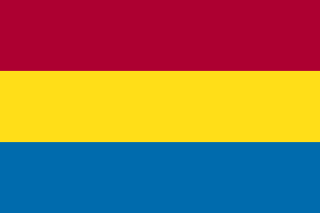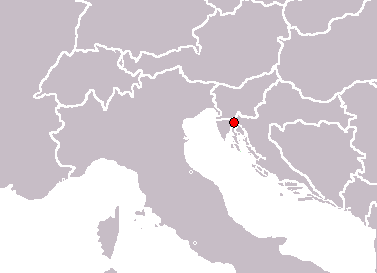Fiume, for those of us unaware, was a disputed territory from 1918 to 1920, then a microstate under League of Nations and Italian supervision starting in November 1920.

On September 1919, Gabriele D’Annunzio and various other Italian ultranationalists (legionnaires) entered the territory and established a protofascist state, with the ultimate goal of making Fiume a territory of the Kingdom of Italy.
Click here for a few glimpses of this rule.
Fiumian workers — both pro and anti‐annexationist — submitted a set of requests to D’Annunzio, which ranged from economic claims to the withdrawal of politically motivated expulsions, the re‐employment of dismissed workers and the right to opt for Fiumian pertinenza for those who were already residents before the war. […]
D’Annunzio was initially open to negotiation, siding with the workers against the National Council and proposing to limit expulsions to individuals regarded as “anti‐Italian,” rather than those promoting “socialist propaganda.”
However, no compromise could be achieved and the workers proclaimed a general strike based on claims regarded as political on April 20. The repression was harsh; hundreds of nonpertinent workers were to be expelled, including the leaders of the Socialist Party.
[…]
On July 11, a list of over one hundred shop owners, who were members of a pro‐Yugoslav League of the Fiumian Industrials, was circulated by D’Annunzio’s command. As had already happened in February, expulsions were preceded by an investigation that aimed to detect their target.
The next day several shops owned by pro-Yugoslav merchants were plundered and the boats anchored in the Dead Channel that flowed between Fiume and Sušak were set on fire. These attacks were followed by expulsion orders against pro‐Yugoslav nonpertinents.
[…]
However, formal expulsion orders were not the only measures that pushed Croats to leave. D’Annunzio’s command reported that legionnaires or civilians disguised as soldiers threatened Croats, telling them to leave if they wanted their life to be spared.
Legionnaires later settled in the houses of evicted families. The image of luxury apartments destroyed by Italian soldiers further fueled frustration and led some expellees to resort to corruption to avoid having their apartment confiscated.
The Italian Army evicted D’Annunzio in January 1921, and most of his legionnaires followed. But not to worry, there were others to continue his glorious legacy of freedom:
During a long phase of instability that ran from D’Annunzio’s eviction to the annexation to Italy in 1924, expulsions never ceased to play a rôle in the political struggle.
While the Free State of Fiume was officially established by the Rapallo Treaty in 1920, it was in power only for a couple of months. Before and after this, the city’s reins of power lay in the hands of temporary bodies that increasingly pursued Fiume’s annexation to Italy.
Those bodies continued to use expulsions to get rid of political and social undesirables, as did many of their predecessors. Similarly, implementing the expulsions was more wishful thinking than reality.
(Source.)
And of course (quoting Dominique Kirchner Reill’s The Fiume Crisis, pgs. 226–7):
[The Fascist bourgeoisie’s] official annexation of the city to Italy in 1924 instigated a remaking of Fiume along textbook nationalist, Italian centralist lines. Gone were programs aimed at making Fiume look and feel Italian while keeping it functioning much as it had before the war. The pragmatic exceptionalisms Fiumians had hoped would give them a leg up once they were reabsorbed into a big state never came to pass.
Crown‐lire exchange rates never arrived at the 1 to 1 everyone had hoped for; by 1924 the now meek and exhausted Fiumians gratefully accepted the 2.5‐to‐1 rate Italy offered. Laws were no longer a mash‐up of Hungarian priors, Italian additions, and Fiume‐only innovations: now the laws enforced from Palermo to Venice were instated en masse in Fiume, regardless of community wishes.
Women lost the vote, divorce became illegal, and tax codes benefited Rome, not Fiume’s regional trade. Pertinency disappeared from the citizenship rolls: with the 1924 annexation, Fiume pertinents had to opt for Italian, Serb‐Croat‐Slovene, or some other citizenship, with nothing in between except statelessness. Fiume pertinents who chose not to become Italian lost the right to state employment.
Under these conditions, many Croatian‐ and Slovene‐speaking Fiumians moved across the river to Sušak, where their ethnic identification bolstered their rights instead of impeding them. Name changes were no longer voluntary—there were specific Fascist protocols about how they were enacted. Fiume’s textbooks and geography lessons were replaced by the national curriculum.
Under Mussolini, Habsburg Fiume was decisively annulled in a way it had not been at any of its earlier crisis points—not the dissolution of Austria–Hungary, the arrival of Inter‐Allied troops, Woodrow Wilson’s diplomatic pronouncements, the takeover of the Italian National Council, the arrival of D’Annunzio and his followers, the Christmas of Blood, or the international recognition of the Free State of Fiume.
Though the majority of locals remained, the contours of their world now reflected the desires of their new empire in formation, the Fascist one, and not the old one, the Habsburg one, whose legacy had lived on for so long.
(Emphasis added in all cases.)
Per The Adriatic Sea Encyclopedia, representatives from the Kingdoms of Italy and Yugoslavia convened on January 27, 1924 and agreed to the Treaty of Rome — a.k.a. Italy-Yugoslavia Treaty — which partitioned(!) the microstate, assigning the City of
Fiume to the Fascists and the City of Sušak to the Kingdom of Yugoslavia; the border between the countries passed along the river Rječina. The International League of Nations recognized the partition as legal on April 7, 1924.



F for the Republic of Fiume, it was the first nation to recognize the USSR